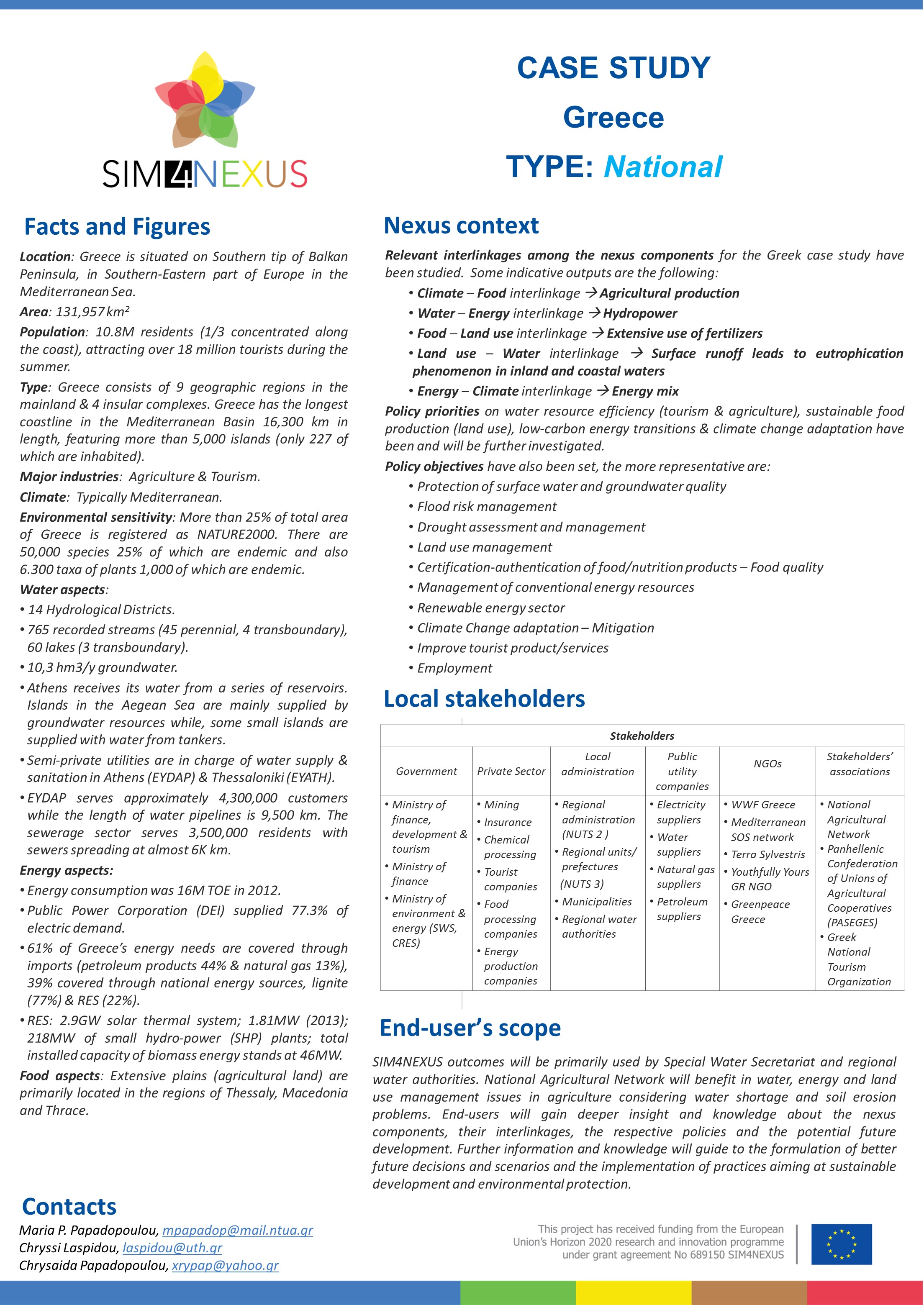Greece: See the big picture!
Lead Partner: University of Thessaly
The Nexus forces us to think about cross-sectoral implications of single-sector strategies.
The Greece Nexus assessment showed that the highest degree of coherence was attained within policies of the same sector. Significant positive policy interactions also exist among policies concerning different Nexus sectors, e.g., climate and energy policies. Climate change adaptation and resilience, combating climate change impacts and sustainable development of agriculture are the most influencing policy objectives.
Finally, Nexus Informatics develops the science of recognising and quantifying Nexus interlinkages. A System Dynamics Model maps sector-specific data, and quantifies interlinkages among water-energy-land-food-climate for Greece. Data availability and scale are core constraints to make the Nexus concept operational. Nexus Directional Chord plots were developed as an innovative visualisation tool, which reveals Nexus hotspots and strong interlinkages among sectors, facilitating stakeholder awareness.
The Nexus is simulated as a holistic multi-sectoral system that provides insights into the vulnerability of resources to future socio-economic scenarios. The analysis shows that to move from a general nexus thinking to an operational nexus concept, it is important to focus on data availability and scale. Nexus Directional Chord plots are developed as an innovative visualisation tool, which reveals Nexus hotspots and strong interlinkages among sectors, facilitating stakeholder awareness.
Click here for more information
For more information please contact:
Chrysi LASPIDOU
University of Thessaly
Maria P. PAPADOPOULOU
National Technical University of Athens
mpapadop@mail.ntua.gr
